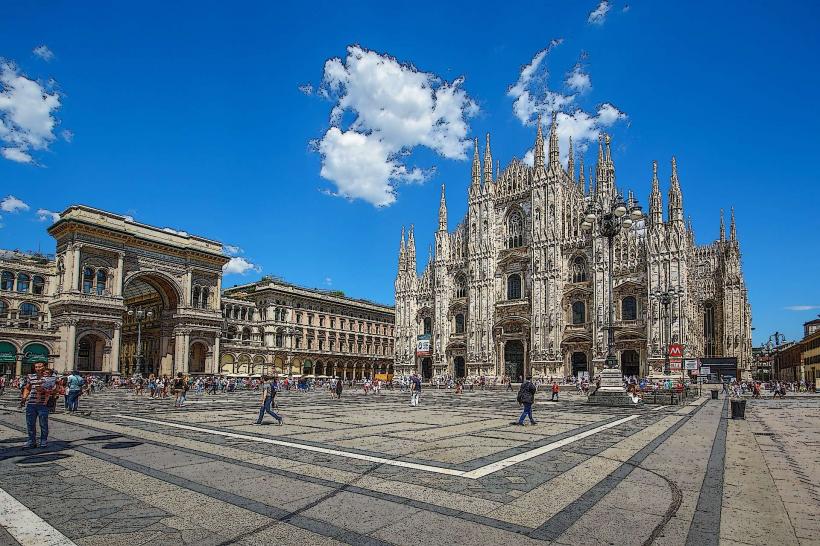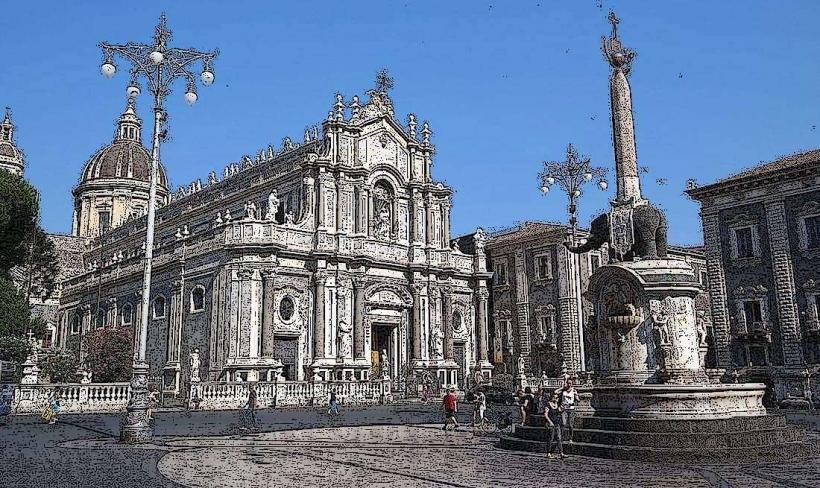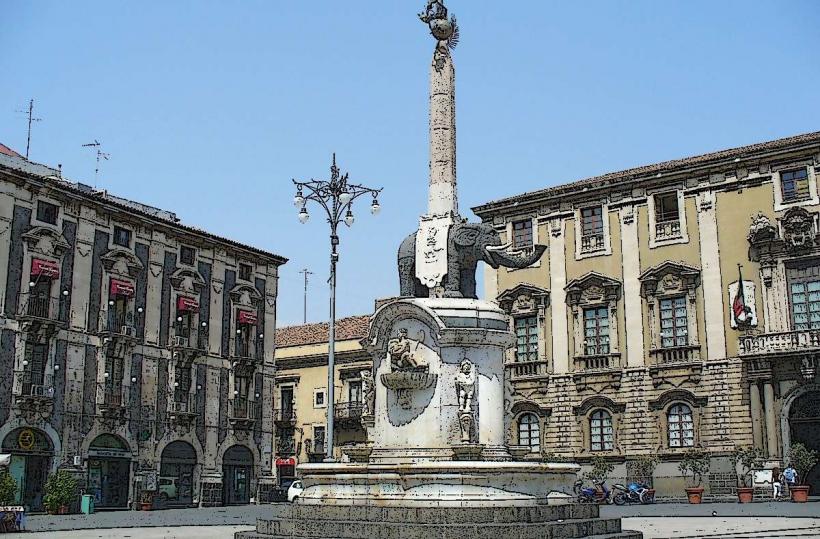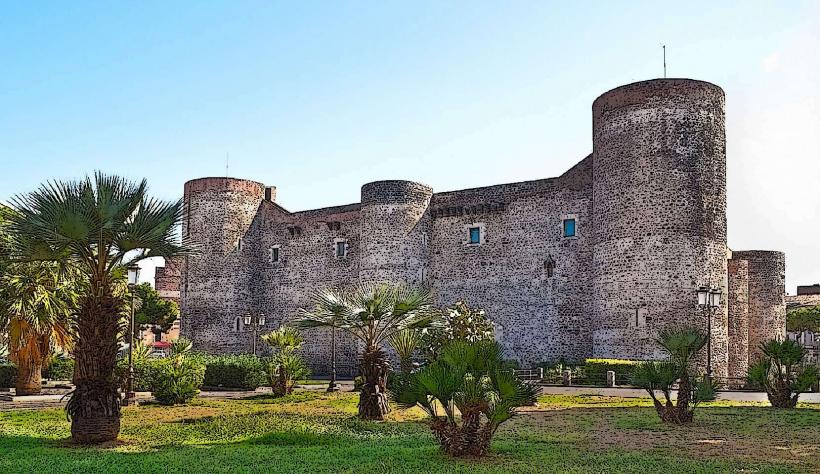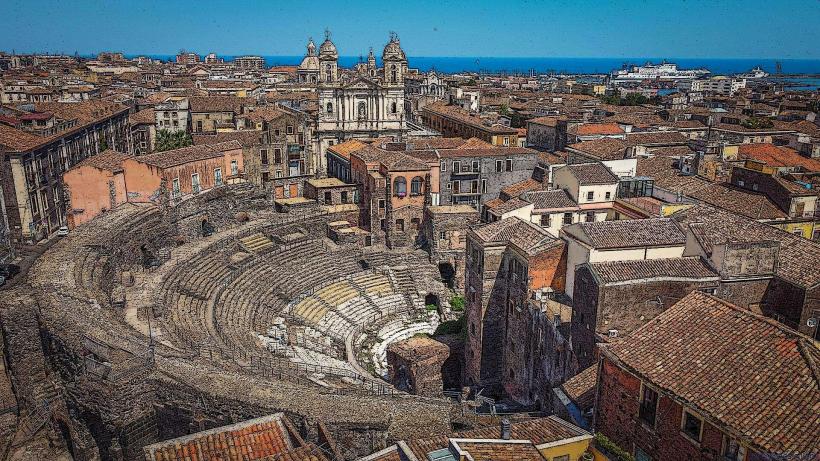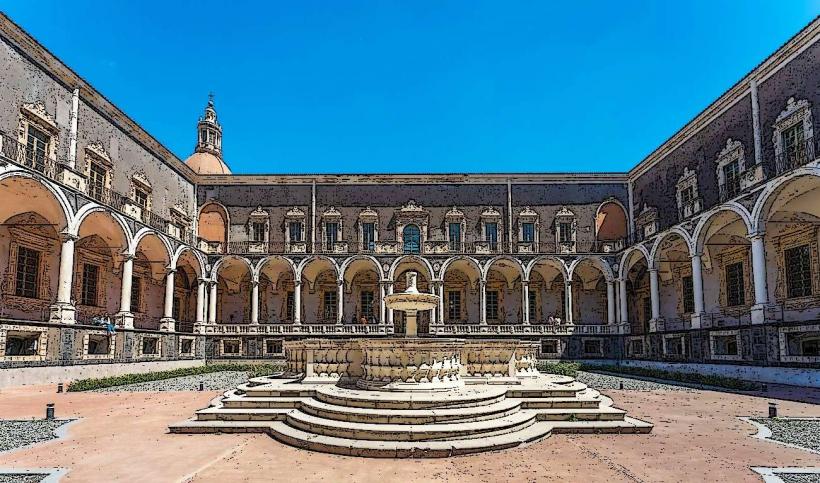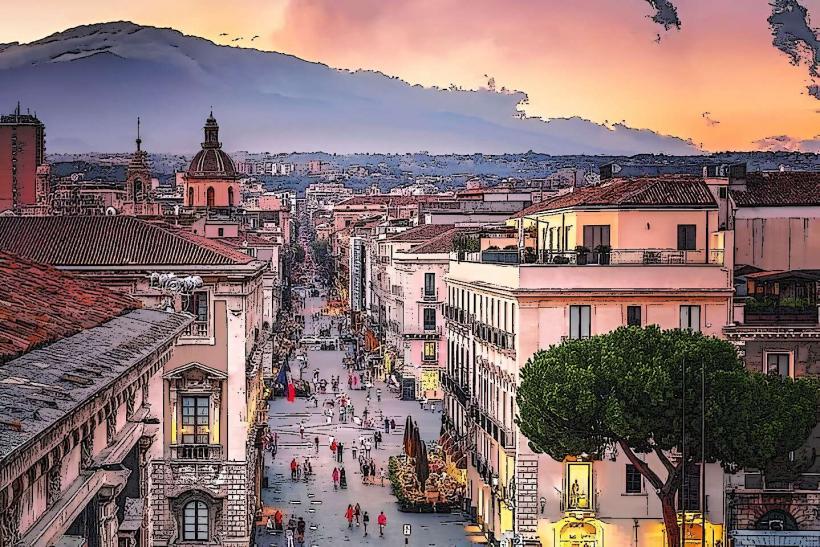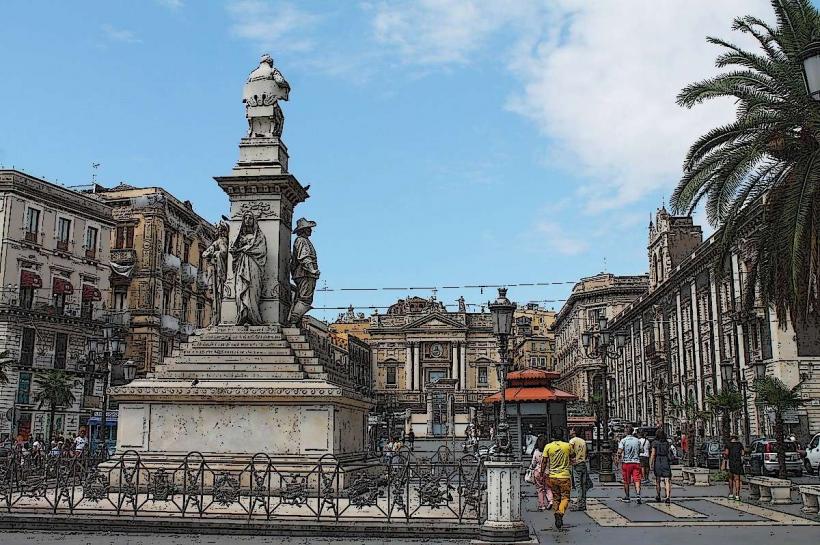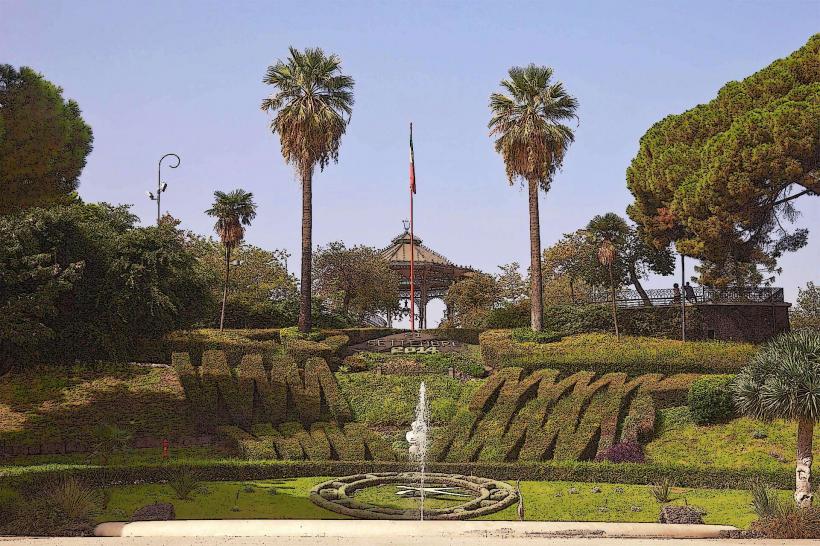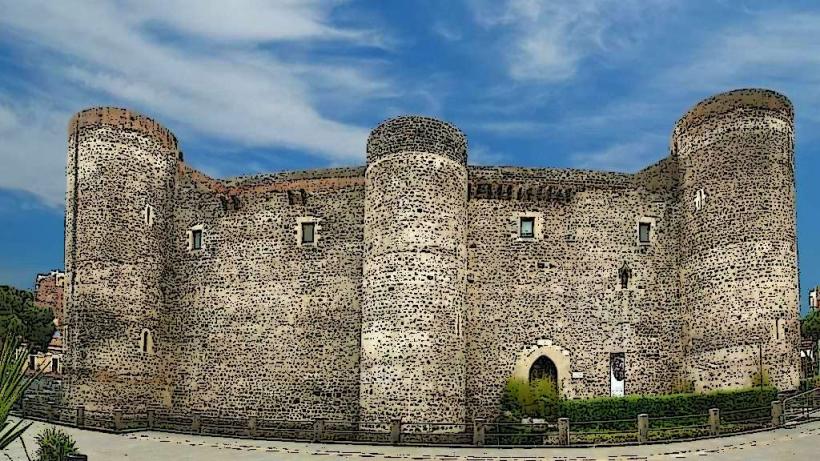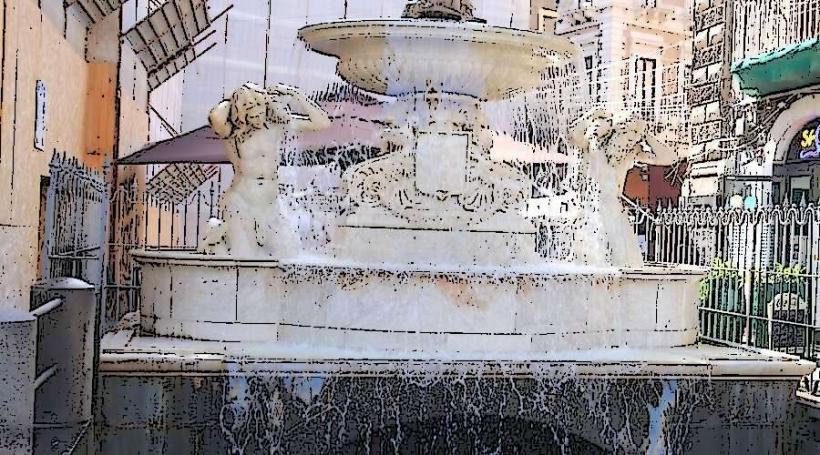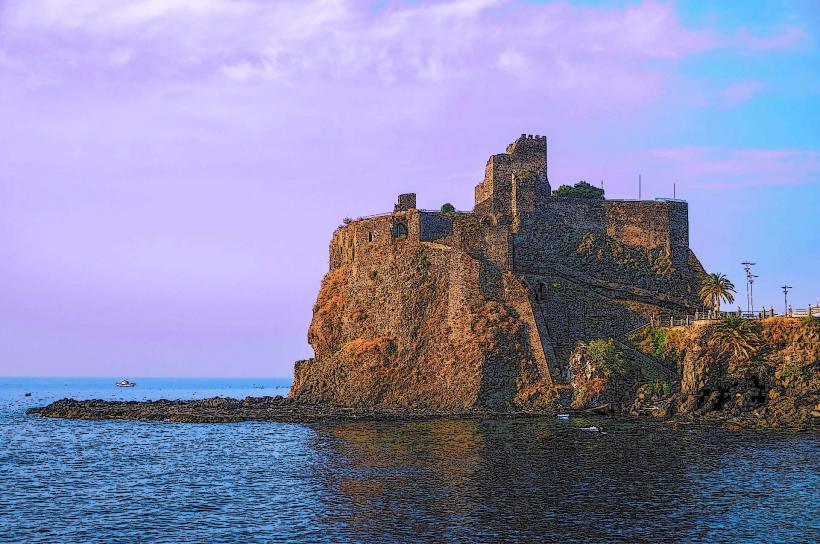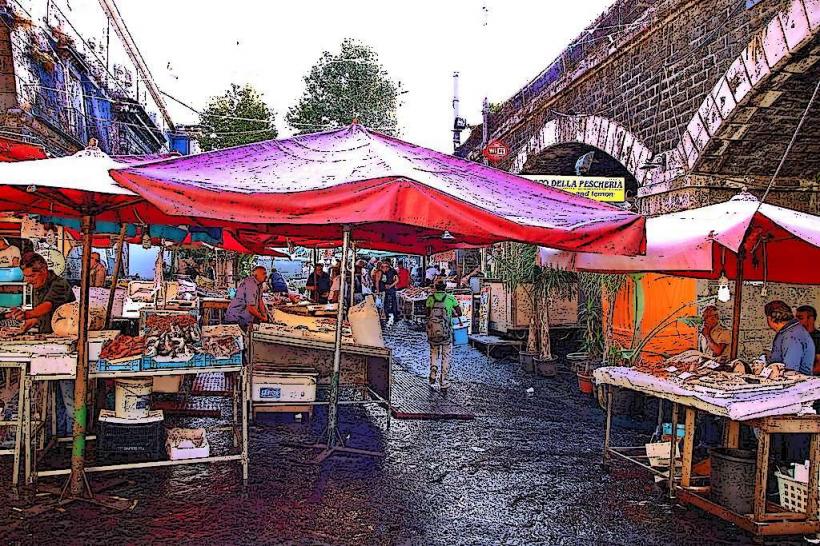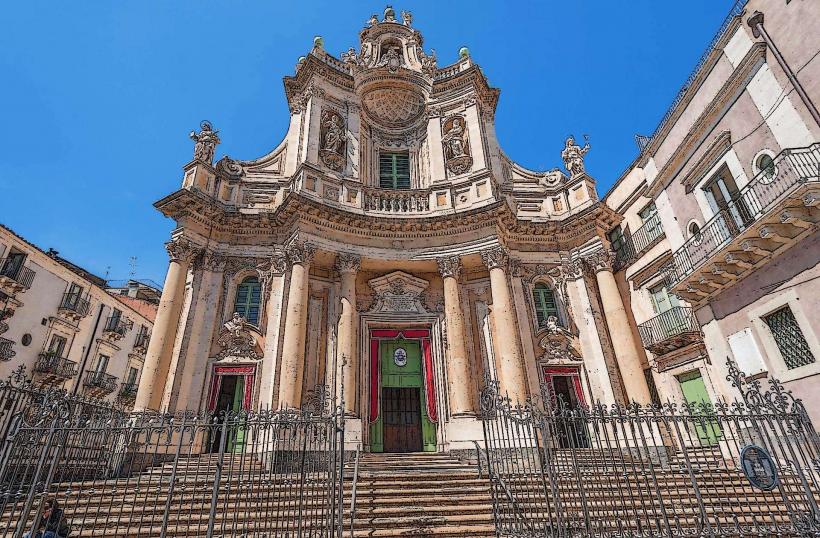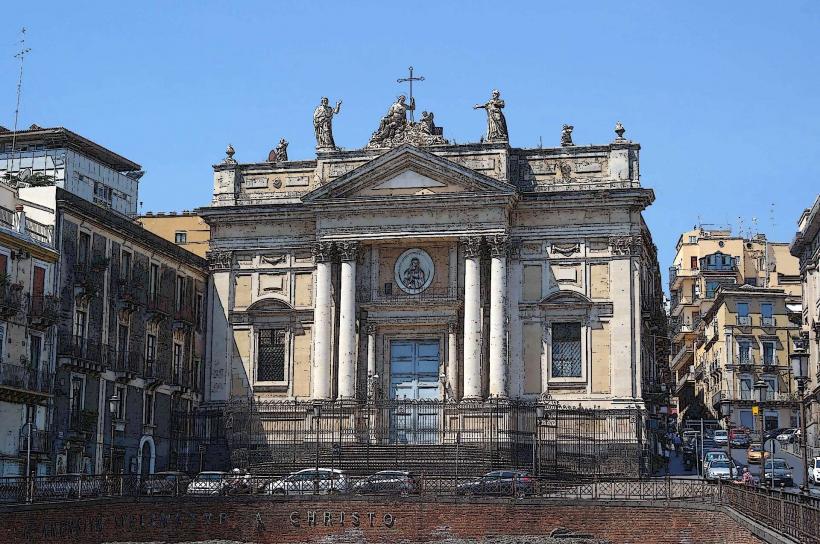Information
Landmark: Odeon of CataniaCity: Catania
Country: Italy
Continent: Europe
The Odeon of Catania is an ancient Roman theater located in the historic center of Catania, Sicily. It is one of the key archaeological sites in the city, reflecting its rich history and the influence of Roman culture in the region. Below is a detailed overview of the Odeon of Catania:
1. Historical Background
- Roman Origins: The Odeon was originally built during the Roman era, likely in the 2nd century AD, as a smaller, more intimate performance venue used for various types of events, including musical performances, poetry readings, and other forms of entertainment. It was likely associated with the larger Teatro Romano (Roman Theatre) of Catania, which also hosted theatrical performances, but the Odeon was designed for more private and small-scale events.
- Location: The Odeon is located near the Roman Theatre in the heart of Catania’s historic center. This area was once a vibrant hub for entertainment and culture during the Roman Empire, with the Odeon serving as a companion venue to the larger, more public spaces.
- Rediscovery: Like many ancient sites in Catania, the Odeon was buried for centuries and rediscovered during excavations in the 19th and 20th centuries. Much of the structure was restored in the late 20th century, allowing it to be better understood and preserved for visitors.
2. Architectural Features
- Design and Structure: The Odeon of Catania is smaller than the Roman Theatre, designed for more intimate audiences, but it retains typical features of Roman architecture. The venue consists of a semi-circular orchestra pit surrounded by terraces that were used for seating. The building was originally roofed, which helped with acoustics, making it suitable for performances.
- Seating: The seating in the Odeon was designed in tiers, which were arranged in a semi-circular fashion around the stage. The seats were likely made of stone, and the highest seats offered views of the stage from the surrounding terraces. The venue could accommodate a few hundred spectators, in contrast to the much larger Teatro Romano.
- Stage and Orchestra: The stage of the Odeon was where musical and dramatic performances would take place. The orchestra pit, or area for musicians, was located at the front of the stage. The architectural layout of the Odeon allowed for excellent acoustics, ensuring that performances could be heard clearly by all attendees.
- Preservation: While not as fully preserved as other ancient sites, much of the seating, stage, and surrounding structures remain intact. The restoration efforts have made it a valuable point of interest for both archaeologists and visitors.
3. Function and Use
- Cultural Hub: During its active period, the Odeon was primarily used for performances of music, poetry, and other artistic events, likely appealing to the cultural elite of Roman Catania. It offered a smaller, more intimate space compared to the Teatro Romano, which could accommodate larger audiences for full theatrical productions.
- Roman Entertainment: The Romans were known for their love of entertainment, and the Odeon was part of a broader network of venues in Catania designed to provide this. The performances held here likely included musical acts, readings, and recitals, creating a space where the elite could gather for cultural activities.
- Religious and Civic Events: Like other Roman venues, the Odeon may have also been used for certain religious or civic events, though it was primarily a place of entertainment. Its intimate size made it an ideal location for more refined gatherings, such as celebrations in honor of gods or emperors.
4. Current State and Visitor Experience
- Archaeological Site: Today, the Odeon of Catania is an important archaeological site, providing a glimpse into the ancient Roman world of the city. The site is accessible to visitors who can walk through the remains of the venue and imagine the kinds of performances that took place here.
- Accessibility: The Odeon is located in the Piazza Stesicoro area, close to other important historical landmarks like the Teatro Romano and Catania’s Cathedral, making it an easily accessible stop for those exploring the ancient city. It is often included in guided tours of the city’s Roman ruins.
- Restoration: Some of the Odeon’s features have been preserved through modern archaeological restoration efforts. However, it remains a more compact and modest site compared to the grander Teatro Romano. Visitors can explore the seating arrangements, view the stage area, and appreciate the architectural design that helped make Catania a cultural center during Roman times.
- Educational Value: The Odeon serves as an educational resource for those interested in Roman culture and architecture. Informational plaques and signs at the site help explain its history and significance, offering context to the ancient structures that remain visible today.
5. Conclusion
The Odeon of Catania is a fascinating and historically significant site that highlights the cultural importance of Roman Catania. Though smaller than the city’s Roman Theatre, it serves as a reminder of the diverse types of entertainment and gatherings that took place during Roman times. Visitors can experience a piece of ancient history in the heart of the modern city, learning about the role of smaller-scale performance venues in the Roman world. As an archaeological site, it complements the other Roman ruins of Catania and offers a more intimate glimpse into the cultural life of ancient Sicily.


